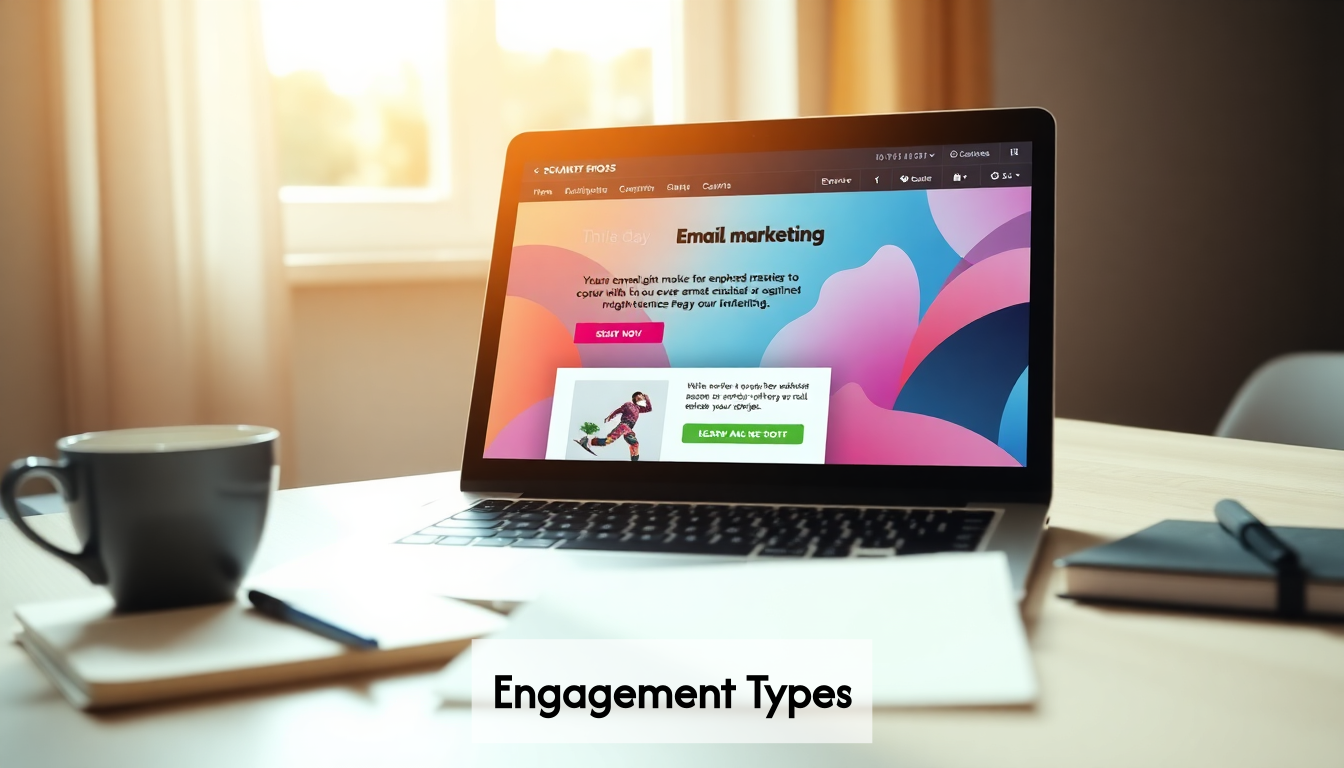The Email Marketing Landscape: Trends, Benefits, and Evolving Strategies
Email marketing continues to stand as one of digital marketing's most powerful tools, delivering an impressive average return of $36 for every $1 invested according to Litmus. This remarkable ROI explains why 87% of companies consider email marketing vital for business success.
The landscape of different types of email marketing campaigns is rapidly evolving with several key trends reshaping strategy implementation:
- AI-Powered Personalization: Beyond basic name insertion, sophisticated segmentation and behavior-based content customization are becoming standard in various types of email marketing campaigns
- Advanced Automation: Trigger-based email sequences responding to specific customer actions generate 320% more revenue than non-automated approaches
- Privacy-First Approaches: With regulations like GDPR and technological changes like Apple's Mail Privacy Protection, marketers must adapt their email marketing types and measurement strategies
- Mobile Optimization: With over 60% of emails opened on mobile devices, responsive design is no longer optional for any type of email campaign
What makes different forms of email marketing particularly effective is their ability to deliver targeted messaging directly to interested audiences who have explicitly opted in to hear from your brand. This permission-based approach creates unique opportunities for relationship building that other marketing channels simply cannot match.
7 Distinct Types of Email Marketing Campaigns to Drive Engagement

Implementing diverse types of email marketing campaigns allows businesses to connect with subscribers at different stages of the customer journey. Each email marketing type serves a specific purpose in nurturing relationships and driving conversions.
1. Welcome Email Series
Welcome emails introduce new subscribers to your brand with 3-5 strategically sequenced messages. These types of email campaigns establish expectations and initiate relationships, generating higher-than-average open and click-through rates according to Maropost.
2. Newsletter Emails
Regular newsletters build brand loyalty by delivering valuable content on a consistent schedule. Effective newsletter campaigns follow a planned content calendar with different themes for different days to prevent subscriber fatigue.
3. Promotional Campaigns
These direct-response emails feature limited-time offers, discounts, or special deals with compelling calls-to-action. Successful promotional types of email marketing use attention-grabbing visuals, concise copy, and clear value propositions.
4. Abandoned Cart Recovery
Triggered automatically when shoppers leave items in their carts, these emails remind customers to complete purchases, often offering incentives to finalize the transaction.
5. Post-Purchase Follow-ups
Sent after completed transactions, these different types of email campaigns confirm orders, provide tracking information, request feedback, and suggest related products.
6. Re-engagement Campaigns
Targeting inactive subscribers, these emails attempt to revive interest with compelling offers, content refreshes, or feedback requests to maintain list health.
7. Event-driven Emails
These campaigns promote webinars, product launches, or seasonal promotions with timely, excitement-building messaging that creates anticipation and drives participation.
Tailoring Your Message: Email Segmentation and Personalization Techniques
The effectiveness of different types of email marketing campaigns hinges on delivering relevant content to the right audience. Email segmentation and personalization are powerful strategies that can significantly boost engagement and conversion rates across all types of email campaigns.
According to Litmus, properly segmented email marketing yields an impressive $36 for every dollar spent according to Litmus, making it a crucial technique for maximizing ROI.

Effective segmentation strategies for various types of email marketing include:
- Demographic Segmentation: Divide your audience by age, location, gender, or job title to create more targeted messaging
- Behavioral Segmentation: Group subscribers based on their interactions with your website, previous emails, or purchase history
- Lifecycle Stage Segmentation: Tailor content based on where recipients are in your sales funnel
- Preference-Based Segmentation: Group subscribers according to self-reported interests and preferences
While segmentation groups audiences with shared characteristics, personalization customizes content for individuals within those segments. Implementing both strategies together enhances different types of email marketing campaigns by creating highly relevant experiences.
Personalization extends beyond simply using a subscriber's name. Advanced personalization techniques include dynamic content blocks that change based on recipient data, product recommendations based on browsing history, and timing emails to coincide with recipient behavior or time zones.
Implementing these techniques across various forms of email marketing leads to higher open rates, increased click-throughs, and improved conversion rates while reducing unsubscribes.
Choosing the Best Email Marketing Type for Your Business Objectives
Selecting the right types of email marketing campaigns depends on understanding your specific business goals, audience needs, and available resources. Different forms of email marketing serve distinct purposes within your overall marketing strategy.
To determine which types of email marketing will work best for your organization, consider these key factors:
- Business Stage and Goals: Early-stage businesses might focus on welcome and educational emails to build brand awareness, while established companies may prioritize retention campaigns
- Audience Characteristics: B2B audiences typically respond better to content-rich newsletters and educational emails, while B2C audiences often engage more with promotional and visual campaigns
- Available Resources: Consider your team's capacity to create, manage, and analyze different types of email campaigns before committing to complex strategies
- Sales Cycle Length: Longer sales cycles benefit from nurturing emails and educational content, while shorter cycles can leverage more direct promotional types of email marketing
Before implementing any email marketing type, it's essential to test and measure performance against your specific objectives. What works for one business may not work for another, even within the same industry.
Many successful email marketing strategies combine multiple email types within coordinated campaigns. For example, a product launch might begin with teaser emails, followed by an announcement, educational content about features, promotional offers, and finally customer testimonials.
When evaluating which email marketing platform will best support your chosen strategy, prioritize flexibility in pricing plans and comprehensive technical support according to Yespo.io. Additionally, always utilize trial periods to thoroughly test platform capabilities before committing.
Optimizing Campaigns: Best Practices, Tools, and Performance Metrics
Once you've implemented various types of email marketing campaigns, continuous optimization becomes essential for maximizing performance. Successful email marketing requires data-driven refinement across all forms of email marketing.
Key Performance Metrics
To effectively optimize different types of email marketing campaigns, track these essential metrics:
- Open Rate: The percentage of recipients who open your email
- Click-Through Rate (CTR): The percentage who click on links within your email
- Conversion Rate: The percentage who complete desired actions after clicking
- Bounce Rate: The percentage of emails that couldn't be delivered
- Unsubscribe Rate: The percentage who opt out after receiving your email
- Revenue Per Email: The average revenue generated by each email sent
Optimization Best Practices
Implement these proven strategies to enhance all types of email marketing campaigns:
Define clear campaign objectives and relevant KPIs before launching any email campaign according to DashThis. Without specific goals, you can't meaningfully measure success or optimize effectively.
A/B testing remains the foundation of email optimization, allowing you to systematically improve subject lines, content, calls-to-action, and send times based on actual recipient behavior rather than assumptions.
Regularly clean your email list by removing inactive subscribers and correcting bounced addresses. This improves deliverability rates and provides more accurate performance data across all types of email campaigns.
Analyze performance patterns across different segments and campaign types to identify what resonates best with specific audience groups, then apply these insights to future campaigns.
Essential Tools
Leverage these tools to enhance your various types of email marketing efforts:
- Email automation platforms with robust analytics capabilities
- Heat mapping tools to analyze where recipients click
- AI-powered content optimization tools for subject line and copy improvement
- Customer journey mapping software to coordinate email types with broader marketing efforts
Emerging Trends: Automation, AI, and the Future of Email Marketing
The landscape of different types of email marketing continues to evolve rapidly with technological advancements reshaping how brands connect with audiences. Understanding these emerging trends is crucial for staying competitive and maximizing the effectiveness of various forms of email marketing.
AI-Powered Personalization
Artificial intelligence is revolutionizing personalization across all types of email marketing campaigns. Modern AI solutions analyze customer data to deliver deeply personalized experiences beyond basic name insertion:
- Automated content curation based on individual preferences and behaviors
- Dynamic product recommendations that adapt to browsing and purchase history
- Predictive offers that anticipate needs based on previous interactions
- Sentiment analysis to gauge and respond to customer emotions
According to Stripo.email, GenAI enables precise audience segmentation by identifying subtle behavioral patterns, dramatically improving campaign relevance and engagement metrics.
Next-Generation Automation
Advanced automation is transforming how marketers implement different types of email marketing strategies:
- Journey-based automation that adapts to individual customer paths
- Behavioral triggers responding to complex interaction patterns
- Predictive send-time optimization for individual recipients
- Cross-channel coordination integrating email with SMS, push notifications, and social media
Zero-Party Data Strategy
As privacy regulations tighten, successful email marketing increasingly relies on zero-party data—information willingly shared by customers through preference centers, surveys, and interactive emails. This shift requires rethinking data collection across all email marketing types.
Interactive Email Experiences
The incorporation of AMP for Email and other interactive elements is transforming static messages into dynamic experiences:
- In-email shopping functionality
- Interactive polls and surveys
- Embedded video content
- Gamification elements that boost engagement
These innovations are reshaping what's possible with different types of email marketing campaigns, creating more engaging and effective customer experiences.
Frequently Asked Questions
What are the main types of email marketing campaigns?
Email marketing campaigns can be categorized into several types, including welcome email series, newsletter emails, promotional campaigns, abandoned cart recovery, post-purchase follow-ups, re-engagement campaigns, and event-driven emails.
How can I improve engagement in my email marketing campaigns?
To improve engagement, focus on AI-powered personalization, advanced segmentation strategies, and automation. Creating relevant and targeted content tailored to your audience can significantly enhance open and click-through rates.
What is the importance of email segmentation in marketing?
Email segmentation is crucial as it allows you to group your audience based on specific criteria, leading to more personalized messaging and higher engagement rates. Proper segmentation can yield an average return of $36 for every dollar spent on email marketing.
How can I measure the success of my email marketing efforts?
To measure the success of your email marketing, track key performance metrics such as open rates, click-through rates (CTR), conversion rates, bounce rates, unsubscribe rates, and revenue per email sent.
Unlock the Power of Engagement Before You Launch!
Are you ready to turn the insights from the Email Marketing Landscape into actionable growth for your startup? As highlighted in our guide, optimizing your email marketing strategy through targeting and personalization can significantly enhance customer engagement. But what if you could take this a step further by not just engaging users but building a viral waitlist before your official launch?
At WaitKit, we help startups and creators like you transform standard sign-up processes into dynamic waitlists that not only attract users but motivate them to share with friends, climbing the waitlist through our powerful referral system. With comprehensive analytics and customizable options, you can leverage data to tailor your outreach. Imagine the excitement of seeing your waitlist grow, fueled by your community's enthusiasm!
Don’t just wait for your product launch to create buzz — ignite it today! Start building your viral waitlist now at WaitKit and turn potential customers into your biggest advocates!
